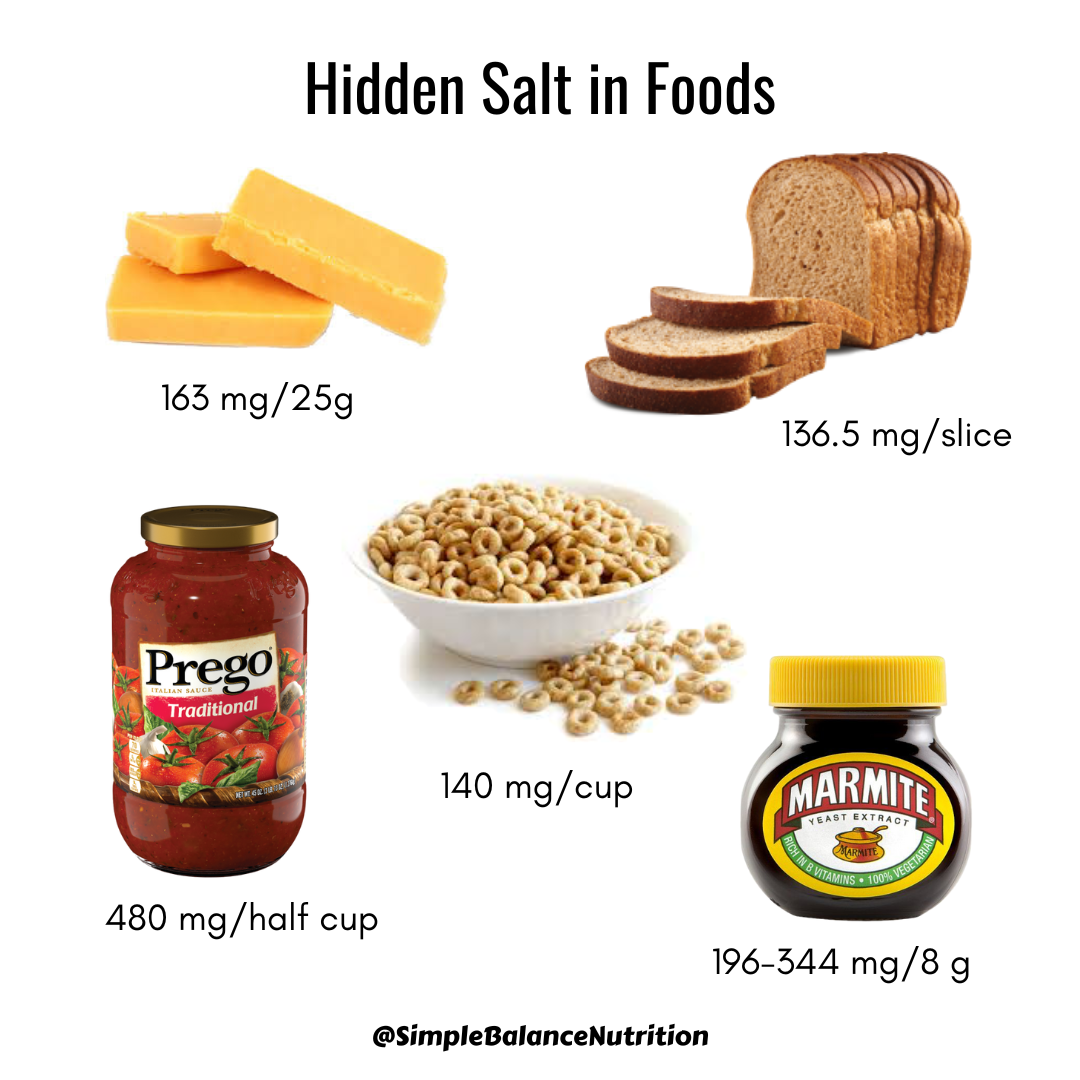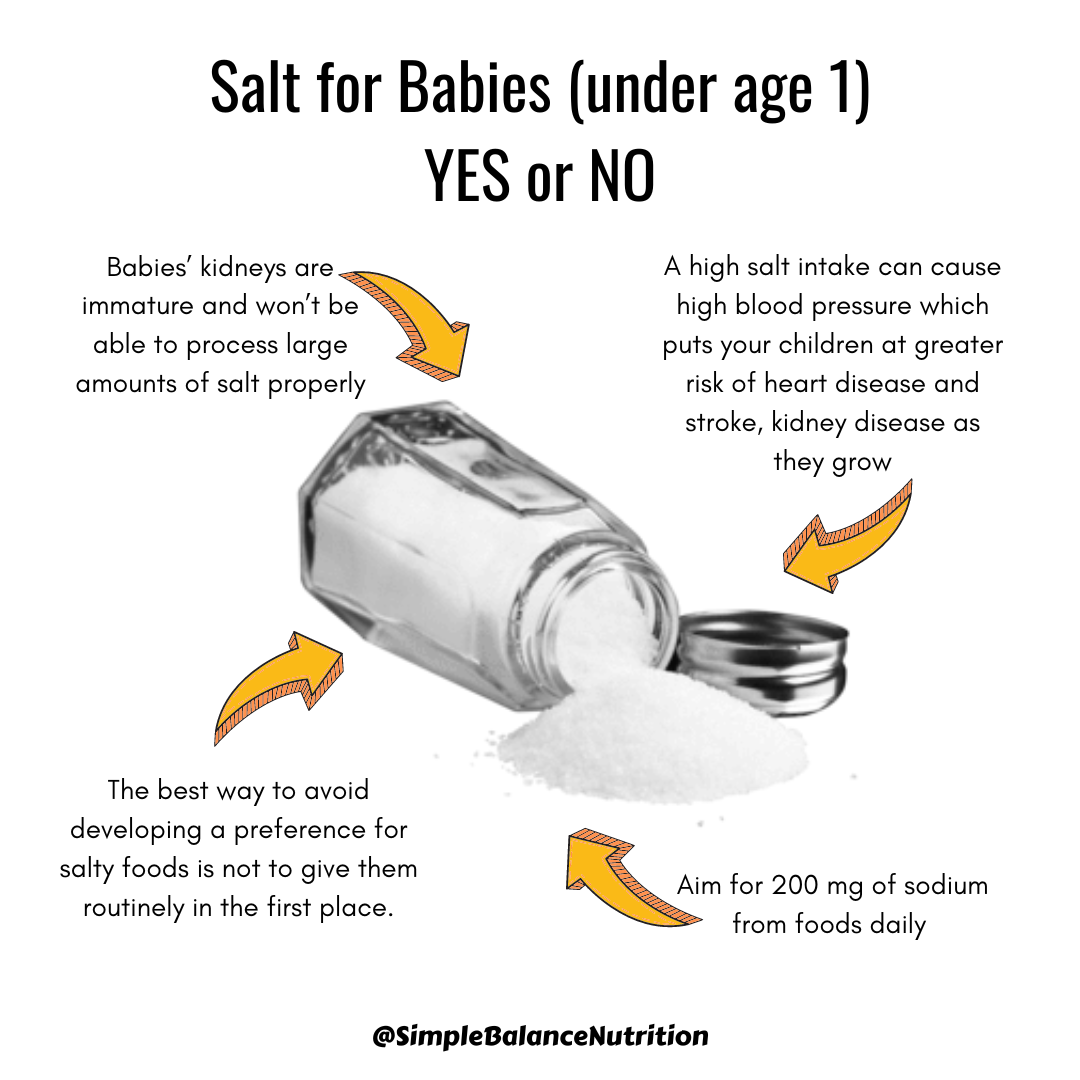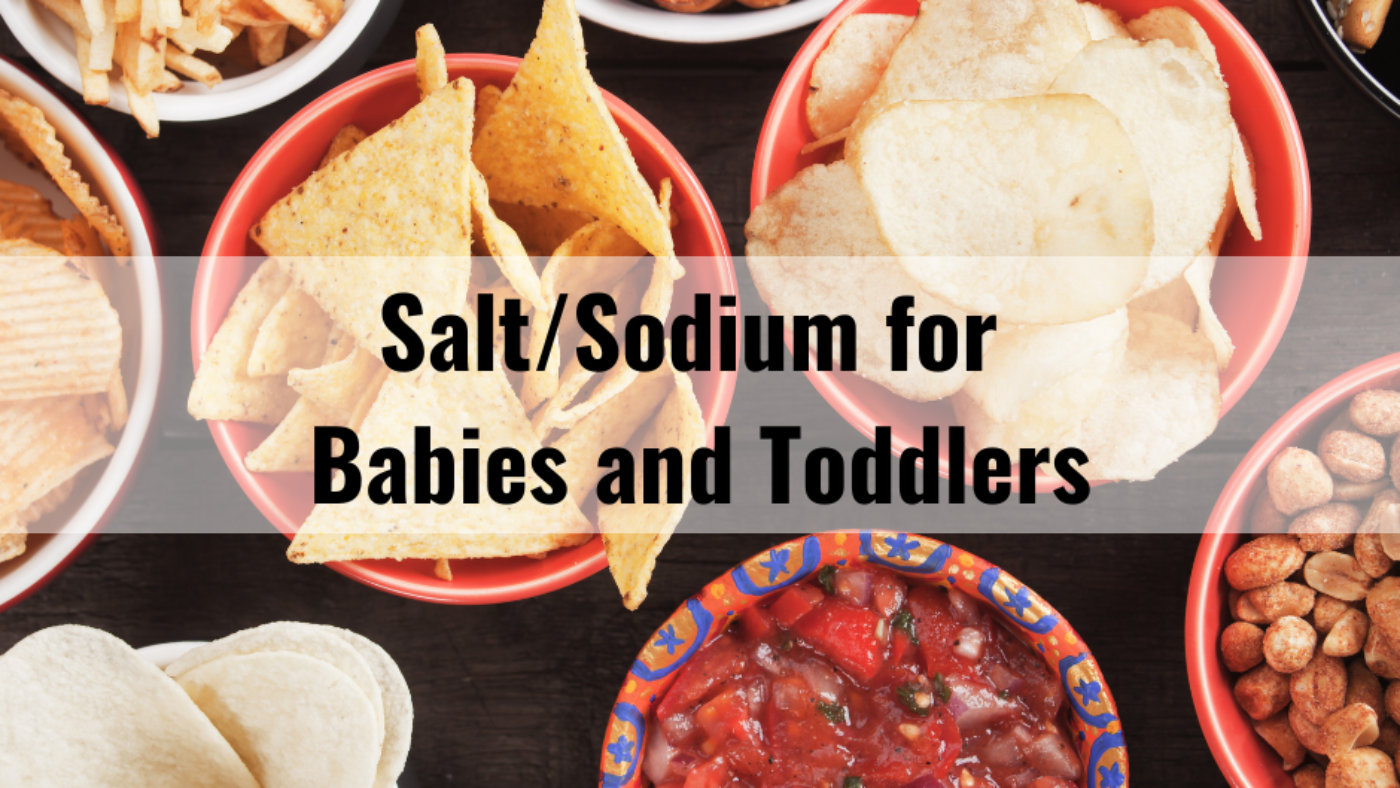I feel like a lot of us, parents, are pretty conscious of how much sugar we’re giving to our little ones, but what about their salt intake, especially if you are doing mixed approach.
HOW MUCH SALT?
Due to insufficient data for babies, an AI (Adequate Intake) for sodium has been established.
- For infants 6 months and younger, the AI for sodium is 110 milligrams per day (here).
- Babies between the ages of 7 and 12 months have an AI of 370 milligrams per day (here).
So, up to 12 months of age, the recommended amount of sodium per day is less than 400 mg sodium. This includes salt found in breastmilk/formula AND solid foods. So, considering that breastmilk and formula have about 200 mg of sodium per 24 oz., this means that babies should only be consuming about 200 mg of sodium via solid food daily.
The reason for this recommended intake level is that we assume that babies’ kidneys are still very immature and won’t be able to process large amounts of salt properly. So far, we don’t have enough research yet to say that this is 100% the upper limit for salt for babies under 1 year old. They may be able to handle more, but without enough research indicating the highest level actually determined safe before developing any risk of poor health effects, sticking to this limit is advised.
SALT VS. SODIUM
Salt and sodium are often used interchangeably and you may see both on food labels. Table salt that we eat is actually made up of sodium (40%) and chloride (60%).
1 tsp salt = 2300 mg sodium
1 g sodium = 2.5 g salt
We definitely need both of these electrolytes (as well as potassium) as they help send messages along the nerves, enable muscles to contract, balance the amount of fluids in the body, enhance nutrient absorption, regulate acid-base balance, absorb potassium, and control the level of bacteria present in the stomach.
SALT IN FOODS
Salt in pretty much everything store-bought, processed or packaged. It’s a preservative and it makes food taste amazing, so naturally food manufactures will put it in deliberately. Salt can be found in:
- Processed meats like deli meats, bacon, hotdogs, ham and sausages.
- Frozen foods like fish sticks, chicken nuggets, frozen meals.
- Potato chips
- Crackers
- Canned soups
- Gravy
- Broths (vegetables, chicken, beef)
- Olives, pickles, pickled vegetables (Kimchi)
- Soy sauce

Other foods that you may not be aware as they don’t taste very salty but are very high in sodium:
- Cheese and other dairy products like yogurt and milk
- Bread, bagels, English muffins, tortillas, and other bread products
- Canned tomato and pasta sauce
- Canned vegetables
- Canned beans
- Box cereal
*Fresh Milk – 100 mg sodium in 1 cup. The high sodium content is one of the many reasons milk is not recommended as a main drink until your baby turns one. A little milk in cereal or baked goods is ok, so no need to cut it out completely.
WHAT SHOULD YOU DO?
As you can see in the picture above, sodium is found naturally in foods as well as added to processed foods. It’s practically in every food. So do we need to completely eliminate salt from baby’s solid foods?
AT HOME
If you are cooking meals for your family, you can always hold off on adding salt until after you have taken out your baby’s portion. For example, when making a stir-fry, put a small portion aside before adding soy sauce to the pan.
It is important not to add salt to anything you cook from scratch, even if you think it tastes bland, taste can be different experience for your baby than it is for you. You can use herbs and spices as flavour enhancers.

During the first few months of eating, it is very unlikely that a baby will consume a large amount of sodium. Especially if you are being mindful in the purchased foods you provide. When baby’s don’t eat that much, it is just a hard proposition for them to get in a lot of sodium. And if a baby is self-feeding, it does take a while for them to start to ingest a decent amount of food!
For older baby, if we are sharing meals and eating more family-style meals, it is likely that you will need to pay a little closer attention to their foods as hidden sodium can be found in so many foods!
AT RESTAURANT
Restaurant foods tend to be much saltier than what you would make at home. It is also very hard to determine how much sodium is actually in a dish. Even if the nutritional information is published, many chefs will add salt as they see fit, regardless of the recipe. There are a couple of ways you can approach this. My general recommendation is not to worry too much. As long as you aren’t eating at a restaurant daily, or multiple times a day, it will all even out. Try to order something that would normally be cooked with less salt. You can even ask the waiter’s or chef’s suggestion.
If you have a baby that doesn’t eat that much yet, or in general, then you should be fine. If your baby usually eats a lot, there is always the option of bringing along some food for them that you know is low in sodium. I generally find that I can make do at restaurants with the food on the menu. I also want my child to experience the different flavors available. But if you’re unsure what is there, it never hurts to bring your own food along.
The key is being mindful and seeing how you can balance things in the next few days. Maybe one day they eat a good amount of cheese and bread, so the next day you are very conscious of only offering low or no sodium foods. Maybe one meal they eat at restaurant and the next meal you focus on fruit and a homemade muffin for snack. Pick and choose your battles and do what you can to make smart decisions wherever possible.
If it’s really only once or twice a week that you have restaurant meals, then just be sure to note that and adjust the food choices for the rest of the week! Keep it truly balanced while continually striving to plan ahead.
BOTTOM LINE
The idea is to do your best, serve homemade meals as much as possible. Read labels and practice mindfulness around what you’re eating and feeding your baby. This is a good practice to get into for the whole family.


Leave A Comment